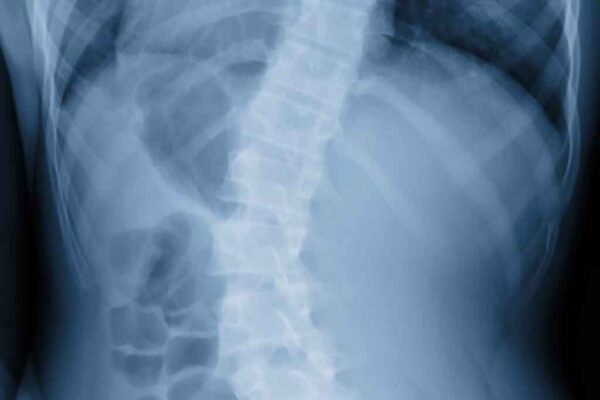Scoliosis
Lateral curvature of the spine to the left or the right can make the spine S shaped.
Causes of scoliosis
In around 8 in every 10 cases, the cause of scoliosis is unknown. This is called idiopathic scoliosis.
Idiopathic scoliosis cannot be prevented and is not thought to be linked to things such as bad posture, exercise or diet.
Your genes may make you more likely to get it though, as it sometimes runs in families.
Less commonly, scoliosis may be caused by:
- the bones in the spine not forming properly in the womb – Congenital scoliosis and is present from birth
- an underlying nerve or muscle condition, such as cerebral palsy- this is called Neuromuscular scoliosis
- wear and tear of the spine with age – this is called Degenerative scoliosis, which affects older adults
Signs of scoliosis include:
- a visibly curved spine
- leaning to 1 side
- uneven shoulders
- 1 shoulder or hip sticking out
- the ribs sticking out on 1 side
- clothes not fitting well or hanging awkwardly
Some people with scoliosis may also have back pain. This is usually more common in adults with the condition.
Treatments for scoliosis
Treatment for scoliosis depends on your age, how severe the curve is, and whether it is likely to get worse with time.
Many people will not need any treatment and only a small number will need to have surgery on their spine.
Treatment for children is not covered here
Adults may need treatment to relieve pain, such as painkillers, spinal injections and, very occasionally, surgery.
Back exercises may help improve the symptoms of scoliosis, and all general exercises is good for overall health and should not be avoided unless advised by your doctor.
Painkillers
Painkilling tablets may help relieve the pain that can be associated with scoliosis.
NSAIDs such as ibuprofen, are usually the first treatment recommended. These are available to buy from chemists and supermarkets without a prescription.
But NSAIDs are not suitable for everyone so check to see whether you can take the medicine first.
See a GP if over-the-counter painkillers do not work. They may prescribe stronger painkillers or refer you to a specialist pain management clinic.
Exercise
Activities that strengthen and stretch your back may help reduce your pain. Exercise can also help you maintain a healthy weight, which can reduce the strain on your back.
It does not matter what type of exercise you choose – the important thing is to keep your back moving. Choose something you enjoy and are likely to be able to stick with.
Some people may also benefit from doing back exercises taught by a physiotherapist. These are unlikely to improve the curvature of your spine, but may help with your pain.
Spinal injections
Scoliosis can sometimes irritate or put pressure on the nerves in and around your spine, causing pain, numbness and a tingling sensation that can be felt in your lower back down to your feet.
In these cases, injections of steroids and anaesthetic given into your back may help.
But the benefits of these injections normally only last a few weeks or months, so they’re not usually a long-term solution.
Back braces
Back braces are not often used in adults with scoliosis, but they can provide pain relief by supporting your spine.These may help get through acute episodes of pain.
A brace may be considered as an alternative to surgery if you are not well enough to undergo an operation.
Surgery
Most adults with scoliosis will not need lumbar decompression surgery.
But it may be considered if:
- the curve in your spine is severe or getting significantly worse
- you have severe back pain and other treatments have not helped
- the nerves in your spine are being irritated or squashed
Types of surgery
Different surgical techniques may be used, such as:
- laminectomy – where a section of 1 of the bones in your spine (vertebrae) is removed to relieve pressure on the affected nerve
- discectomy – where a section of 1 of the discs between the vertebrae is removed to relieve pressure on a nerve
- spinal fusion – where 2 or more vertebrae are joined together to stabilise, strengthen and straighten the spine
In many cases, a combination of these techniques will be used.
Risks of surgery
Spinal surgery is a major operation and it can take up to a year or more to fully recover.
It also carries a risk of potentially serious complications, including:
- failure to reduce the pain – surgery is generally better at relieving pain that radiates to the legs, rather than pain in the back
- a wound infection
- a blood clot
- rarely, damage to the nerves in the spine – this can result in permanent leg numbness or weakness.

